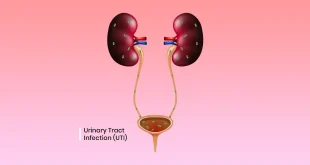Inpatient vs. Outpatient Rehab: A Comprehensive Comparison
Recovering from addiction is a personal journey that often requires professional help. Choosing between inpatient and outpatient rehab programs is a crucial decision that can significantly impact recovery success. Both approaches offer unique benefits and are suited to different needs. Let’s delve into the key differences, benefits, drawbacks, and considerations to guide you in selecting the best option.

Key Differences
Level of Care
- Inpatient Rehab: Provides 24/7 supervision and support in a controlled environment. This intensive care is beneficial for individuals with severe addictions or those who need a structured setting away from potential triggers.
- Outpatient Rehab: Offers scheduled treatment sessions, allowing patients to live at home. This setting is ideal for those with mild addictions or strong external support systems.
Duration
- Inpatient Rehab: Programs typically last 28 to 90 days, depending on the individual’s needs and the severity of the addiction.
- Outpatient Rehab: Duration varies widely; some programs last several months to a year, with varying degrees of involvement.
Cost
- Inpatient Rehab: Generally more expensive due to the comprehensive services and accommodations provided. Costs can vary significantly based on the facility.
- Outpatient Rehab: Usually more affordable, as patients are not required to stay overnight and can continue working or attending school.
Suitability for Different Patients
- Inpatient Rehab: Best suited for those with severe addiction, co-occurring mental health disorders, or a history of relapse. The immersive environment minimizes distractions and focuses on recovery.
- Outpatient Rehab: Suitable for individuals with less severe addiction or those with commitments that cannot be put on hold. It allows integration of treatment into daily life.
Benefits and Drawbacks
Inpatient Rehab Benefits:
- Intense focus on recovery with minimal distractions.
- Access to a support network of peers and professionals.
- Comprehensive therapy options, including individual and group sessions.
Inpatient Rehab Drawbacks:
- High cost and potential disruption to daily life and responsibilities.
- Limited privacy due to communal living arrangements.
Outpatient Rehab Benefits:
- Flexibility to maintain daily routines, such as work and family obligations.
- Opportunity to apply coping strategies in real-world settings.
- Lower cost compared to inpatient programs.
Outpatient Rehab Drawbacks:
- Less intensive support, which may not suffice for severe addictions.
- Greater exposure to triggers and risk of relapse without 24/7 supervision.
Choosing the Right Type of Rehab
Selecting between inpatient and outpatient rehab should be based on individual needs, addiction severity, and personal circumstances. Consider the following:
- Addiction Severity: Severe addictions often require the intensive support of inpatient rehab.
- Support System: A strong external support network can enhance the effectiveness of outpatient programs.
- Lifestyle and Responsibilities: Outpatient rehab offers flexibility for those who cannot leave work or family obligations.
- Financial Considerations: Evaluate your budget and insurance coverage when deciding.
Success Rates and Challenges
- Success Rates: Both inpatient and outpatient programs can be effective. Success depends on the individual’s commitment and the quality of the program.
- Potential Challenges: Inpatient participants may struggle with reintegration into daily life post-treatment, while outpatient participants must manage triggers in their environment throughout treatment.
Ultimately, the choice between inpatient and outpatient rehab should be made with careful consideration of personal needs and circumstances. Consulting with healthcare professionals can provide valuable insights and help in making an informed decision for a successful recovery journey.
FAQs About Inpatient Rehab
1. What is inpatient rehab?
Inpatient rehab involves staying at a treatment facility 24/7 to receive intensive care and support for addiction recovery. This type of program provides a structured environment, free from external triggers and distractions, conducive to focusing solely on recovery.
2. How long does a typical stay in inpatient rehab last?
The duration of inpatient rehab can vary, but programs usually range from 28 to 90 days. The length of stay depends on the individual’s specific needs, the severity of the addiction, and any co-occurring mental health conditions.
3. What should I expect during inpatient treatment?
During inpatient rehab, patients can expect a daily schedule that includes individual therapy, group counseling, educational workshops, and recreational activities. The goal is to address the root causes of addiction, develop coping strategies, and build a supportive community.
4. How should I prepare for admission to inpatient rehab?
Preparation involves arranging time off work, securing childcare if necessary, and managing financial responsibilities. It’s also important to pack essentials, such as clothing and personal hygiene items, while leaving behind potentially triggering items.
5. What about privacy in inpatient rehab?
Inpatient rehab facilities prioritize patient privacy and confidentiality. Treatment is conducted in a secure environment, and personal information is protected in accordance with healthcare privacy laws.
6. How much does inpatient rehab cost, and is insurance accepted?
The cost of inpatient rehab can vary widely based on the facility and the services offered. Many rehabs accept insurance, and coverage can significantly reduce out-of-pocket expenses. It’s important to consult with both the facility and your insurance provider to understand the costs involved.
7. What types of therapies are offered in inpatient rehab?
Inpatient rehab programs typically offer a range of therapies, including cognitive-behavioral therapy (CBT), dialectical behavior therapy (DBT), group therapy, family therapy, and holistic treatments such as yoga or art therapy. The specific therapies depend on the facility and the individual’s treatment plan.
8. How involved can family members be in the rehab process?
Family involvement is often encouraged as it can support recovery. Many inpatient rehabs offer family therapy sessions to help address family dynamics and promote healing. However, the level of involvement may vary based on the program’s policies.
9. What are the success rates of inpatient rehab?
Success rates for inpatient rehab can vary, but they generally offer higher rates of sustained recovery compared to outpatient programs, especially for individuals with severe addiction. Success depends on the individual’s commitment, support system, and the quality of the treatment program.
These FAQs aim to provide a comprehensive understanding of inpatient rehab, helping individuals and families make informed decisions about treatment options.


